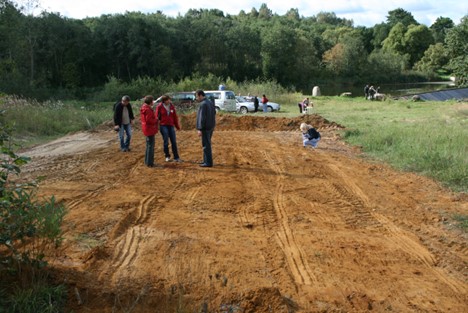In the Papilė outcrops alone, NRC scientists have collected and described more than 380 species of animals: foraminifera, pinnipeds, molluscs, echinoderms, fish, etc. The most abundant species counted were foraminifera (83), bivalves (41), and ammonites (25). The name Papilė (Akmenė district) is used in the paleontological names of several new species: brachiopods Rhynchonelloidella popilanica (Pusch), ammonites Indosphinctes (Elatmites) papilensis (Pakuckas), Binatisphinctes (Okaites) popilanicus (Krenkel), Cardioceras (Plastmatoceras) popilaniense Boden, bivalves Astarte (Astarte) papilensis Rotkytė. Thus, fossil names make Papilė famous in the world of science.
An interesting fact about the outcrops of the Papilė Jurassic system is that it is the oldest geological object studied in Lithuania (since 1825), and as early as in 1811, Dionizas Poška wrote about the “fossilised frogs” of Papilė in his poem “Gromata pas Tadeušą Časkį”.
Nowadays, there are no outcrops of Jurassic fossils available in Papilė, they can only be found on private properties or in quarries where minerals are mined, so agreements and permits are needed.

Jurassic fossil site in Papartynė (Akmenė district)
NRC Collections Department
